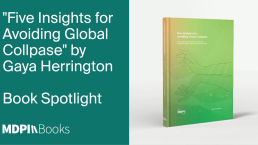
Open Access Book Publishing vs. Traditional Book Publishing
The open access movement has impacted the publishing landscape significantly. Whereas it was academic journals that primarily benefited in the early stages of the movement, now attention is shifting towards books too.
But how does open access book publishing compare to traditional book publishing, and how do the two models also complement each other in today’s publishing landscape?
The history of book publishing
Book publishing became possible during the printing revolution. This occurred around 1450, when German inventor Johannes Gutenberg created the moveable-type printing press.
The printing press allowed books to be produced on a bigger scale, and at a much faster rate and cheaper cost. Before the printing revolution, books in Europe numbered in the thousands. Only 50 years after the introduction of Gutenberg’s invention, that number had increased to roughly 9 million.
The mechanics of this system of printing became the foundation for traditional book publishing. But what do we mean by traditional book publishing?
What is traditional book publishing?
Traditional book publishing as we know it arose from this context of mass production and distribution.
Suddenly, authors had much larger audiences and greater prospect of generating profit from sales. In the centuries that followed, small press houses and eventually large publishers worked with authors to help distribute their work.
This is the publishing model we largely recognise today. Traditional book publishing means that publishers offer an advance to authors against future royalties. Any sales generated by the distributed book help offset production costs and maintain the publisher’s growth.
Today, traditional book publishing is still largely the dominant publishing model. However, the internet and the call for accessible research has led to open access publishing slowly becoming a legitimate publishing alternative.
What is open access book publishing?
Open access book publishing involves making academic books freely available online to the public without the traditional barriers of access, such as purchase costs or restrictive licensing agreements.
The goal of open access book publishing is to facilitate worldwide access to important research whilst increasing the impact and visibility of authors’ works.
As with traditional book publishing, authors still complete a manuscript, submit their proposal to a publisher, and sign a contract to publish their book. However, in open access book publishing, the publication of the book doesn’t depend on a return in investment through sales.
Since open access means that books are available to read for free, the open access book publishing model is not sustained by sales. This means it has to be sustained in other ways.
Publishers working with the open access book publishing model rely on what are known as book processing charges (BPCs). BPCs cover the costs involved in the production of the book. They are usually paid to a publisher by an author’s funding body or institution.
These are the fundamentals and principles of open access book publishing. But how does this publishing model compare to traditional book publishing?
Open access book publishing vs. traditional book publishing
There are a few key distinctions between open access book publishing and traditional book publishing. Let’s take a look at them.
Visibility
Due to their content being easier to disseminate and access, open access books benefit from greater visibility than non-open access books. In fact, open access books are, on average, downloaded seven times more, cited 50% more, and mentioned online ten times more.
Immediacy and accessibility
One of the greatest benefits of open access book publishing is that any book can be immediately downloaded and accessed via the internet.
This has a significant advantage over traditional book publishing, which relies on spaces such as bookstores and libraries to stock books. These conventional routes have physical constraints, with bookshops being limited in what they can stock. There are also time constraints, with people wanting to find a book potentially having to wait for copies to be ordered in.
Furthermore, the immediacy and accessibility of open access books is a great benefit to researchers. Any researcher can easily find and build upon an almost endless supply of research. In turn, this advances the research base in a much faster and more egalitarian way.
Copyright
Open access book publishing allows research to be freely accessed as well as reused and quoted. It’s important that authors get to control how this happens.
In traditional book publishing, the publisher typically owns the copyright to a book. In open access book publishing, authors retain complete control over their work. When authors publish their open access books with MDPI Books, they retain copyright ownership through a Creative Commons License.
A Creative Commons License gives the public a standardised way to use and reproduce your work. Authors have the freedom to decide how their work is shared, reused, and adapted, without relinquishing ownership to a third party.
Royalties
An argument against open access is that it stops authors from earning royalties on sales. This isn’t exactly the case, however.
It’s true that authors of non-open access books can make royalties from sales. Royalties can be small though, and the benefits of publishing a book as open access may even outweigh the risk to sales.
In addition to greater reach and impact, publishing as open access may also increase the sales of non-open access books too.
Compliance with funding agencies
The policies of many funding agencies now require authors to make their research openly accessible. The main argument for this is that publicly funded research should benefit society by being accessible to all.
Authors who wish to publish their research as open access can easily comply with such mandates, creating a transparent and innovative research culture.
The coexistence of both models
Traditional book publishing and open access book publishing are two different business models. However, it would be wrong to think that they don’t overlap or benefit each other in various ways.
One common misconception is that open access publishing signals the end of traditional print publishing. But this is far from the truth.
The idea of accessible knowledge for all remains at the heart of open access publishers and their publishing models. Yet many fully open access publishers also produce print copies of books using print on demand technology.
At MDPI Books, we recognise the value of print copies. Our authors and editors receive complimentary copies of their published books. We also send print copies to conferences as well as libraries. Additionally, a copy of each of our books is held in the Swiss National Library.
In our online library, you can find freely accessible PDFs as well as purchasable print copies of all our book titles. For more information about open access book publishing, read our other articles on the topic.









